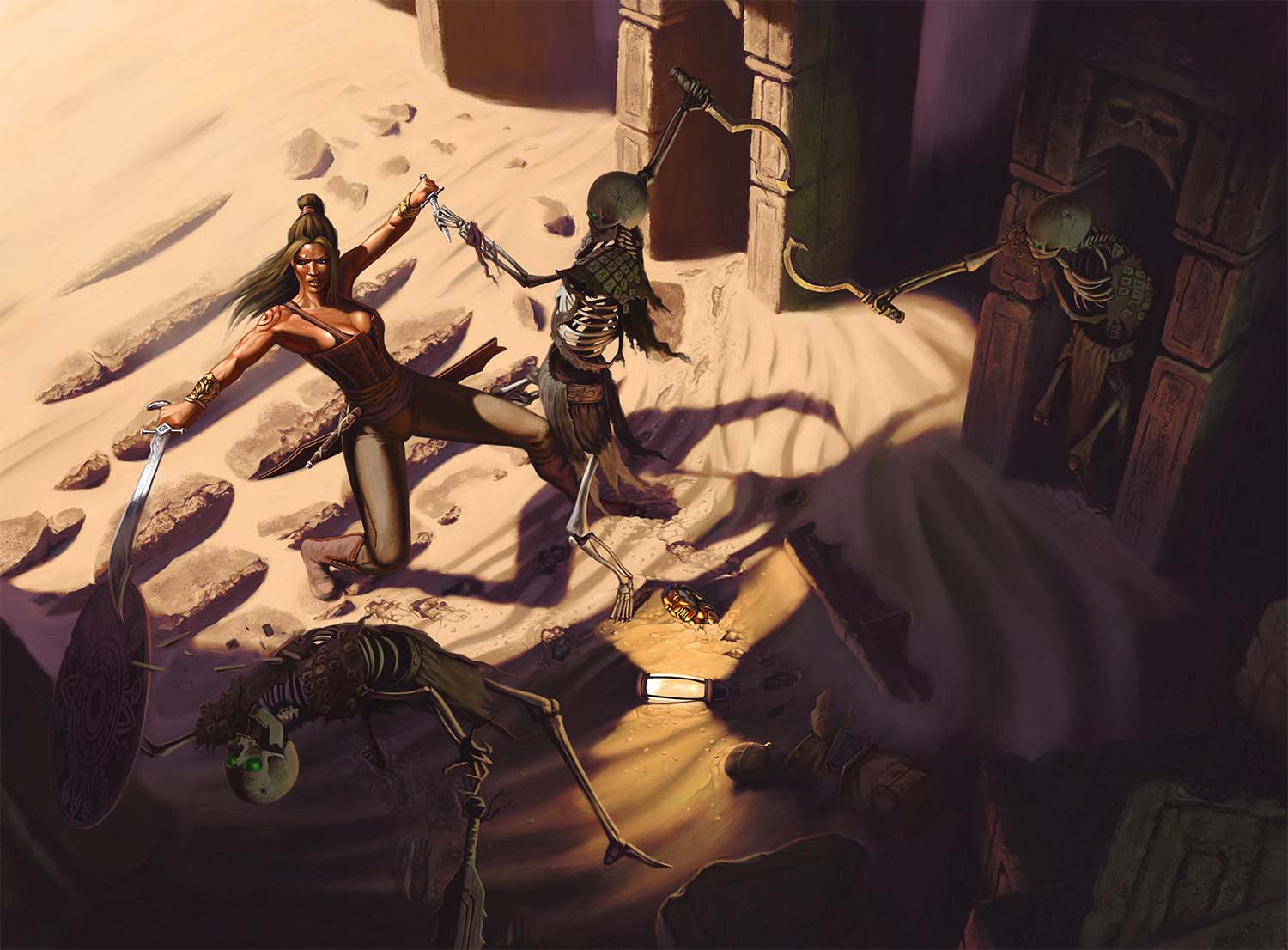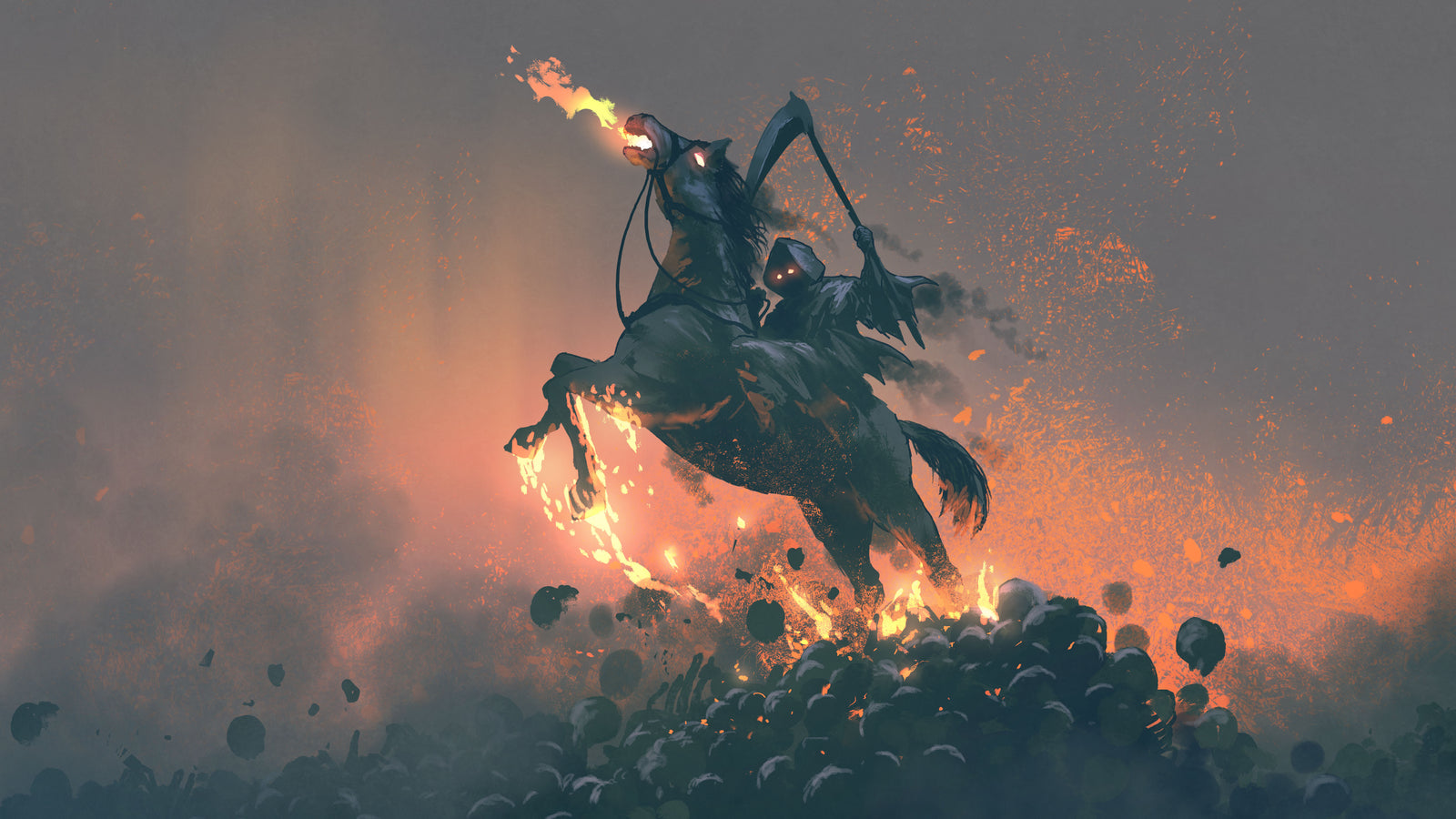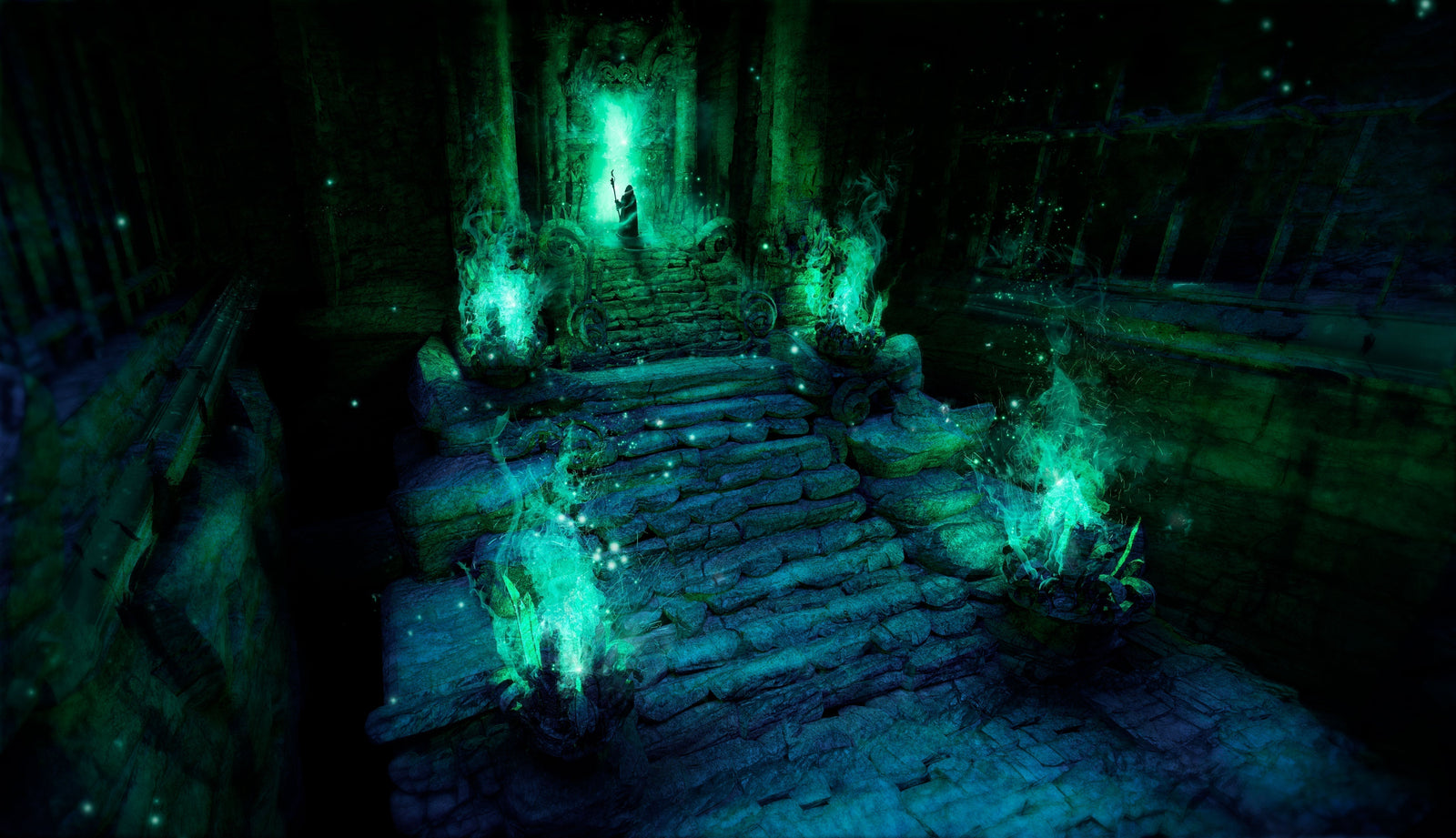Your Cart is Empty

Sandbox vs. Railroad: Which Is Better?
March 02, 2021 4 min read
Has another Dungeon Master ever asked you if you're a "sandboxer" or a "railroader?"
Or maybe you've heard someone decry adventures that are railroads and then talk about chasing the illustrious, ever-elusive sandbox-style campaign.
You may even be wondering what I'm talking about with all these buzzwords.
First, a brief explanation. Railroads and sandboxes are both styles of D&D adventures that focus on limiting the players' choices (railroad) or offering a huge abundance of choices (sandbox).
A quick example of a railroad: a dungeon where the rooms are laid out in a linear fashion, from entrance to boss, with no flexibility to the order of exploration.
A sandbox example is a dungeon laid out in a hub, where each room branches off the center and the players can choose the order in which to explore.
"Aha!" most people say. "Limiting players' choices is bad, so railroad adventures must be bad." The fast conclusion is that sandboxes are superior because they offer so much choice.
But! I'm about to go against that philosophy. Hear me out. Railroads serve an important purpose, and so do sandboxes. Neither is good at the exclusion of the other, and I argue that the best kind of adventure is actually a blend of the two — let's call it a "sand road."
Now, why should you even care about the fiddly nature of a sandbox vs. a railroad? If your players are having fun, then all is well. That's an axiom of truth if I ever heard one. But maybe you're limiting yourself without realizing it by only employing one style. Or perhaps you want to write and publish a D&D adventure, and you want to make sure you're considering all the angles!
So I'm going to lay out the major benefits and dangers of each style, and then explain why I feel the sand road (the blend of the two) is an ideal outcome.
Join The Arcane Library's newsletter for a free 1st-level adventure, plus more articles like this one!
Railroad Benefits
- The adventure's hooks and story are easy to find and follow
- Good for providing a concrete beginning, middle, and end, AKA a classic story
- Ideal when you can't write for every potential outcome (e.g. a published adventure)
- The players can feel lead by the nose
- The players' choices do not affect the outcome in extreme cases
- Lack of flexibility for going "off script"
- Players have an unmatched sense of freedom
- The story is a direct result of the players' decisions and actions (player agency)
- The world feels very real and unscripted
- Players often don't follow the full trail of a story arc with a beginning, middle, and end
- Players have to find adventure, sometimes failing to do so because of the paralyzing nature of too many options
- The world can feel less heroic without a driving, campaign-level goal
How to Achieve A Blend: The Sand Road
The major achilles heel of a railroad is lack of flexibility, while the same for a sandbox is lack of motivation and story. And there's a way to lessen the issues of both by combining both styles.
You can do this by alternating between a sandbox and a railroad at varying levels. By that I mean from the top down from the campaign level, to the arc level, and then the adventure level.
A fantastic example of this is the most recent Legend of Zelda title, Breath of the Wild. The main hero, Link, knows there's an overall story goal (defeat Ganon and save Princess Zelda), and to do so, he must visit different dungeons around the map to get sweet gear and correct the terrible wrongs inside each one that are contributing to Ganon's power.
At the campaign level, Breath of the Wild is a railroad. Link must conquer each dungeon to have a chance at beating Ganon (except for those crazy people on YouTube who run straight to Ganon armed only with a wooden stick and three hearts).
But on the arc level, the order in which Link explores the world is totally up to him. He must travel, battle, and talk his way around the map to hit the four main dungeons (arcs). There are sub-storylines with people and places he can accept, or not, to help him get around. This is a classic sandbox in all its glory.
Finally, each actual dungeon in Zelda is a railroad again. There's a fun beginning, middle, and end that must be followed in mostly the prescribed path in order to beat the dungeon.
So you can see that we variate between railroad - sandbox - railroad depending on what scope you're looking at with the overall campaign in Breath of the Wild. This is what made it one of the most exciting and satisfying Zelda games ever released — it balances between the freedom to explore while maintaining a driving storyline that prevents the hero from being a directionless wanderer.
Final reveal: You can even variate the sandbox vs. railroad element within the scope of a single adventure.
An example I can cite that I wrote it, Temple of the Basilisk Cult. It starts with a railroad when a pre-determined event happens to the players that creates a story goal. Then, it shifts into an exploration-driven sandbox within a temple dungeon that has many branching paths. At the end, there's a final railroad element to the adventure — in order to "beat" the dungeon, the players have to deal with a final boss in whichever way they choose, be it negotiation, combat, or something else.
Ultimately, it's a variation between a sandbox and railroad. It never leans too heavily toward one side or the other. It's a sand road!
Header art © Dean Spencer, used with permission / drivethrurpg.com
Also in Arcane Articles

How To Design Exciting D&D Encounters
November 08, 2022 6 min read
Encounters are one of the most important parts of Dungeons & Dragons. So how do we make sure we're designing good ones?
Read More
How to Write A D&D Adventure: The Complete Guide
October 21, 2021 14 min read 6 Comments
So you want to write a 5E D&D adventure? Read on for the step-by-step process I've developed over the years for writing an action-packed D&D adventure with as little friction as possible.
Read More
Imagine First, Design Second
May 05, 2021 4 min read 7 Comments
Sometimes, I write a dud. Here's the story of how I recently wrote an adventure that went nowhere, and how I managed to learn something useful from the whole experience in the end.
Read More
